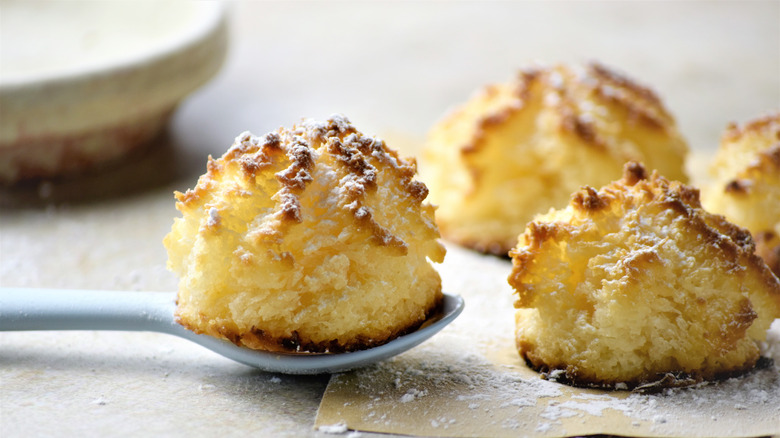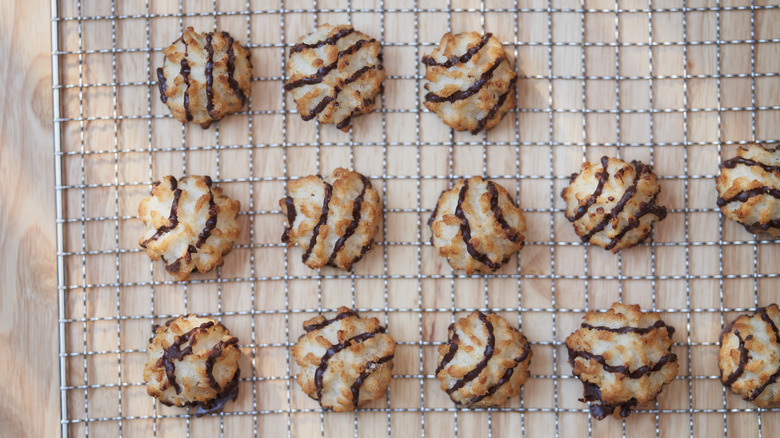How The Coconut Macaroon Became A Passover Dessert
With Passover fast approaching, American Jewish people will be getting ready to stock their seder tables with traditional foods linked to the story of Exodus: bitter greens to represent the pain of being enslaved, a roasted egg in honor of spring's renewal, and thick, sweet charoset to stand in for the mortar used to build brick buildings, among others. Of course, evolving traditions have led to Jews eating many different delicacies during this high holiday, including a whole list of foods you didn't know were kosher for Passover.
On the tables of many Ashkenazi Jewish families, you will find coconut macaroons for dessert. Macaroons — not to be confused with macarons — are a drop cookie made of a simple mix of egg whites, sugar, and shredded coconut. They became associated with Jewish holidays for the reason that they are kosher and, containing no dairy, are fit to be eaten in the same meal as meat as per kashrut dietary laws. With no grain used as leavening, they are appropriate for Passover, when leavened foods are metaphorically and literally off the table.
But that's not the whole story of the macaroon. Over the course of the late 19th and early 20th centuries, coconut, which was once a rare and premium ingredient, became trendy. It grew popular amongst the old-fashioned equivalent of Jewish influencers and so gradually passed into holiday traditions.
Coconut macaroons: from bougie to commonplace
The first American coconut macaroons were something of a status symbol. Upper-class Jewish housewives passed around recipes for these cookies, which were by nature exclusionary since coconut was a precious ingredient for many households in the late 1800s. As the Industrial Revolution cranked on, drying and shredding coconut became cheaper and more efficient, and more and more Jewish families could enjoy baking macaroons at home. By the start of the 20th century, fashionable Jewish-owned department stores in major cities promoted serving macaroons at Passover and made it popular and trendy to do so. These stores were owned by Eastern European immigrants who would have seen coconut as a symbol of abundance.
Over time, Jewish food manufacturers like Manischewitz took over the job of baking macaroons for families. This started during World War II, when Jewish soldiers out in the field didn't have access to homemade goodies, and became popular on the home front because of convenience. Before the internet, accessing tips on how to open a coconut without hurting yourself wouldn't have been as easy to come by, and preparing your home for Passover is already a labor-intensive job. Who doesn't appreciate a little store-bought shortcut? Regardless of your religious affiliation, grab a can of macaroons from the grocery store or possibly even Costco's kosher bakery during this spring holiday season, if for no other reason than that they're delicious.

